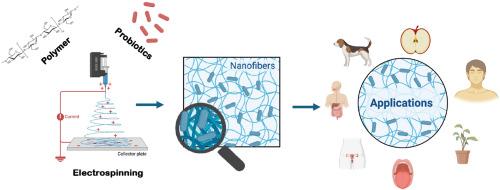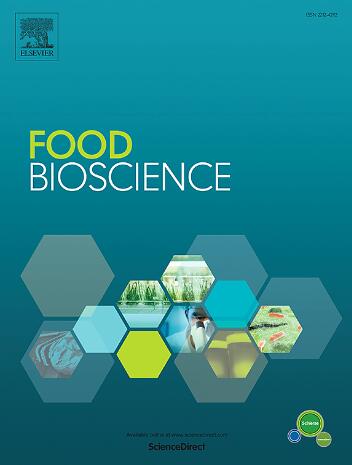Polymeric nanofibers as advanced probiotic carriers: Production strategies, functional performance, and emerging applications
IF 5.9
1区 农林科学
Q1 FOOD SCIENCE & TECHNOLOGY
引用次数: 0
Abstract
In recent years, the incorporation of probiotics into polymeric nanofibers has emerged as a promising strategy for protecting and enabling the controlled release of these beneficial microorganisms, enhancing their stability and functional effectiveness. This review aims to provide a comprehensive overview of the incorporation of probiotics into nanofibers, emphasizing the advantages of nanofiber-based systems for encapsulation and controlled release. Our text explores the techniques for nanofiber production, the challenges in maintaining probiotic viability, and their potential applications in the food, pharmaceutical, and agricultural industries. Incorporating probiotics into nanofibers holds promising applications by enabling protection and controlled release. However, most studies remain in vitro, highlighting the need for in vivo validation. Conventional production methods, like electrospinning, face scalability challenges, making alternative techniques such as Solution Blown Spinning a viable option for industrial application. Additives such as stabilizing and bioactive compounds have been added to fiber-forming dispersions to stabilize bacteria and thus improve their survival during electrospinning and storage. Future research should optimize these approaches to enhance probiotic stability and functionality in final products.

高分子纳米纤维作为先进的益生菌载体:生产策略、功能性能和新兴应用
近年来,将益生菌掺入聚合物纳米纤维已成为一种很有前途的策略,可以保护和控制这些有益微生物的释放,提高它们的稳定性和功能有效性。本文综述了纳米纤维中益生菌的研究进展,重点介绍了纳米纤维包封和控释系统的优势。本文探讨了纳米纤维生产技术,维持益生菌活力的挑战,以及它们在食品、制药和农业工业中的潜在应用。将益生菌结合到纳米纤维中,通过保护和控制释放,具有很好的应用前景。然而,大多数研究仍然在体外进行,这突出了对体内验证的需求。传统的生产方法,如静电纺丝,面临着可扩展性的挑战,使替代技术,如溶液吹丝成为工业应用的可行选择。添加剂如稳定和生物活性化合物已被添加到纤维形成分散体中,以稳定细菌,从而提高其在静电纺丝和储存期间的存活率。未来的研究应优化这些方法,以提高益生菌在最终产品中的稳定性和功能。
本文章由计算机程序翻译,如有差异,请以英文原文为准。
求助全文
约1分钟内获得全文
求助全文
来源期刊

Food Bioscience
Biochemistry, Genetics and Molecular Biology-Biochemistry
CiteScore
6.40
自引率
5.80%
发文量
671
审稿时长
27 days
期刊介绍:
Food Bioscience is a peer-reviewed journal that aims to provide a forum for recent developments in the field of bio-related food research. The journal focuses on both fundamental and applied research worldwide, with special attention to ethnic and cultural aspects of food bioresearch.
 求助内容:
求助内容: 应助结果提醒方式:
应助结果提醒方式:


